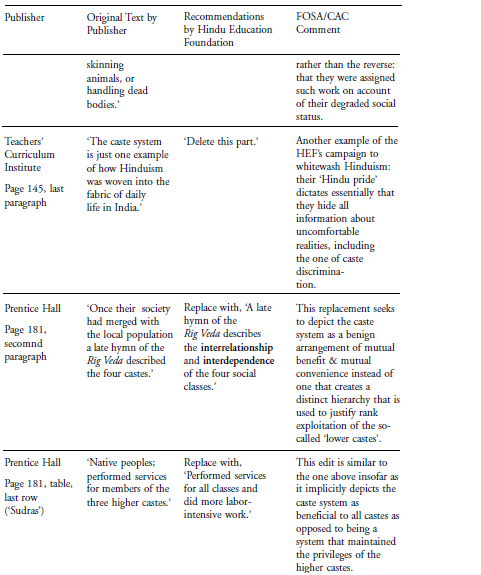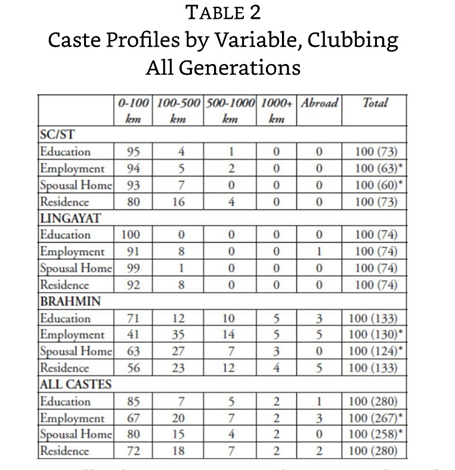Dr. Bhushan Amol Darkase

“If anyone throws his glance at the Indian physical and social world as a spectator, he will undoubtedly find this country a home of glaring inequality.”
-Dr Ambedkar [Mooknayak]
A comedian’s monologue at the Kennedy Centre explaining the difference between good and bad India shows the pervasive naivety of people regarding the origin of inequality in India. Many people who came forward to support also fantasized about the problem in the binary context. Reducing the issue to a binary model is a favorite subject for the so-called high castes because they reap the benefits of having such a view. Caste is a diabolical system ubiquitously operational in India. Excluding caste from the discourse on social justice is a terrible joke on the foundation of the system of thought, i.e., truth.
Even if the discourse is reduced to the binary code, ignoring the deep rot developing within an apologetic distinction between Hindutva and Hinduism is still impossible.
The comedian gave a monologue at the Kennedy Centre in the US. The diaspora at the event are the same people who fund and lobby the off-root sangh foundations having close ties with the RSS. The RSS funds its local religio-cultural operations from the same funding, and no one has any doubts about what political outfit RSS supports in India.
Even from this window view, it’s like trying to arouse the conscience of the person who set the house on fire to fetch the water to douse it.
See the information on funding of RSS- Indians in the United States had given $350,000 to rebuild the Ram Mandir in Ayodhya just the year after the demolition of the Babri Masjid. [1]
The authors of the report (2002) of the India Development and Relief Fund (IDRF) & the (2004) AWAAZ network give details of the foreign financing structure of the Sangh Parivar through the IDRF and Sewa-UK. They exposed the relations that link the Hindu diaspora in these countries to the Sangh & reveal that the primary source of Sangh funds has come from abroad. [1]
Amongst the 75 organizations affiliated with the IDRF—the primary beneficiaries of the 5 million dollars donated between 1995 and 2002—60 of them were Sangh Parivar affiliates, like the Sewa Bharti, the Vanvasi Kalyan Ashram, or other affiliates of the Hindu nationalist movement. [1]
Vanvasi Kalyan Ashram is for tribals’ welfare—the RSS offshoot devoted to aboriginals and fighting Christian proselytising activities among them.
IDRF in the US is a sister organization of RSS’ ‘Sewa Vibhag’ (the charitable service wing) which looks after channeling its collection to hundreds of Hindutva organizations in India. [2]
These ‘saffron dollars’ are used for ten thousand projects comprising dispensaries, dormitories, schools, and adult education in 32,250 tribal villages, working to bring the indigenous Adivasi ‘tribal’ groups into the national mainstream. It is worth noting that Vanvasi dorms and schools are reminiscent of RSS camps. Such Saffron Charity enters an under-funded sector of Indian Society and carries enormous power over the subaltern population.[2]
So under the veneer of mainstreaming, RSS uses the ‘catch- them young’ strategy for the most vulnerable, to propagate among them the Hindu way of life & call it Hindutva or Hinduism, both representing the same old caste-based violent Brahmanism.
Apart from using the saffron dollars for ‘Forced Sanskritaization,’ it is also used for political purposes.This dimension is naturally highly appreciated by the BJP, whose funding needs are constantly growing due to the rising costs of election campaigns.[1] Mathew and Prashad identify the spread of Hindutva’s influence in the diaspora from the late 1980s with rising BJP fortunes and the success of the Ramjanmbhoomi movement in India.[2]
The strategy of ‘catch-them young’ operates abroad as well. The overseas Sangh affiliates try to rewrite the history of Hinduism in the history textbooks of foreign countries.
The last chapter of the book ‘Hindu Nationalism- A Reader’ by Christophe Jaffrelot gives a glimpse of such activity-Hindu nationalists from the Vedic Foundation (VF) and the Hindu Education Foundation (HEF) (an off-root of the Hindu Swayamsevak Sangh of America) petitioned ‘to protest unfair and inaccurate depiction of Hinduism in school textbooks.’
The Vedic Foundation recommended 382 edits in 8 textbooks. The other Indian organization active in the US, including the Friends of South Asia (FOSA), also submitted their report showing that these recommendations from VF & HEF reflected a fundamentalist agenda.
The terms of the debate—and its outcome—are summarized in the book. It is described as the California Textbooks Controversy. [4]
For ex: For detailed debate—and its outcome refer book by C. Jaffrelot (Ref- 4 given at the end)

Even a simple look at the summarized debate in the book shows that the VF-recommended edits tried to hide Brahmanism and Caste in these history textbooks. At places, they also attempted to euphemize the evil results of caste hierarchy in Hinduism. Recommended modifications seeking to hide & deny the caste system’s infernal role within Hinduism.
The question we need to ask is why the Indian Hindu diaspora funds RSS ideology?
Three factors are considered responsible for the funding of Hindutva organizations by the Hindu diaspora- cultural isolation in a foreign country with longing for the preservation of religious and family cultural values, the rising tide of Islamophobia after 9/11 with similar superimposed developments in India & economic benefits. [1,2]
The most salient reason is tapping the fear of preserving religious and cultural values by the RSS outfits with other factors acting as additional incentives. They attract anxious Hindu immigrants eager to convey Hindu culture to their children. Why would these organizations otherwise want to hide the obnoxious elements in the history of Hinduism?
All the activities of these outfits gives assurance to anxious first-generation parents & try to preserve the cultural & religious practices of Hinduism intact, which are nothing other than age-old Brahmanism in its pure essence.
The modus operandi of the overseas shakhas was adapted according to the diaspora population. Despite these variations, the HSS (Hindu Swayamsevak Sangh) shakhas attest to the transposition of the Indian model of the RSS in the diaspora. The temple network acts as a logistic base for all the religio-cultural activities, the same way the RSS had benefited from its network of the Hindu temples in India.[1]
A mini-survey is given by Satish Deshpande in his book “Contemporary India,” in the last chapter on globalization. The inclusion criteria for the mini-survey were middle-class (nearly the same economic status), large families with at least three (G1, G2, G3) generations & residing in Hubli-Dharwad.[5]
For each person in each generation of each family, information was collected on the following variables:
1. Place of birth and/or family residence (the latter if the two were different);
2. Place(s) of education;
3. Place(s) of employment;
4. Place of residence of spouse immediately before marriage;
5. Place of last residence (for deceased persons) or current residence.[5]
The spatial spread is divided into five divisions, starting with the micro-region (up to 100 km around the family home); the meso-region (100–500 km); macro-region (500–1,000 km); the national level (more than 1,000 km, but within the nation); and, finally, the international level which includes all locations outside the country.[5]
The only criterion for stratification was Caste, with two families being drawn from SC & ST, the Lingayat and Brahmins each.[5]
See the Table given in the book. [5]

The Brahmin rows in the Table are pretty striking; spread seems the most for employment & education category.
As for the ‘Abroad’ category, even though only for the third-generation, only the Brahmin Caste shows non zero results in the given Education, Employment & Residence criteria. The author informs that the above data is merely an illustrative one and not a substantial research study. [5]
Still, I think it gives a glimpse of the possibility of upper caste majority abroad and requires more extensive studies to see the caste composition of the diaspora population.
According to Jayant Lele, these affluent Indians find in the Brahmanical, unifying, and flattering dimension of Hinduism as presented by the Sangh Parivar a confirmation of their dominant position within Canadian Society and within the Indian community.[1] I think the same also goes for the Hindu diaspora in other countries.
Anand Teltumbde also has a similar opinion regarding RSS funding- The Indian-American community, mainly having the upper caste-upper class background, naturally subscribes to the Hindutva ideology. With their prosperity abroad, they tend to see the possibility of reviving India’s ‘past glory.’ It has actively contributed considerable funds to the Hindu fundamentalist organizations and has built a formidable network in the international arena. [3]
In Anand Teltumbde’s words, “Hinduism, which is a modern name for what was known as Brahman Dharma, Vedik Dharma, etc., throughout history, has been intrinsically imperialist, fascist, and violent. In its essential attitude and content, Hinduism represents the same old imperial, fascist and violent Brahmanism.” [3]
The importance disappears in the macro view; these processes are evident as we micro-process caste. As far as the Hindu diaspora is concerned, the dream of reviving India’s ‘past glory’ from the brahminical point of view & their own upper caste-upper class background is the answer as to why and who funds the sangh ideology.
“As long as caste in India does exist, Hindus will hardly intermarry or have any social intercourse with outsiders; and if Hindus migrate to other regions on earth, Indian caste would become a world problem.” -Dr. Ambedkar [Castes in India- Their mechanism, genesis, and development]
~~~
References
The term ‘saffron dollars’ is taken from the article of Nikita Sud.
1}The Sangh Parivar and the Hindu Diaspora in the West: What Kind of “Long-Distance Nationalism”? Christophe Jaffrelot and Ingrid Therwath, International Political Sociology (2007) 1, 287–290
2}Sud, Nikita. “Tracing the Links between Hindu Nationalism and the Indian Diaspora.” St Antony’s International Review, vol. 3, no. 2, St. Antony’s International Review, 2008, pp. 50–65
3} Hindu Fundamentalist Politics and American Empire
Anand Teltumbde, Voice of Dalit, Page156
4} Hindu Nationalism- A Reader by Christophe Jaffrelot
Chapter:20-The Diaspora and Hindu Nationalism, Page 363-369
5} Contemporary India- A sociological view by Satish Deshpande
Chapter:7- Globalization and the Geography of Cultural Regions
Location (kindle) 2695-2759
~~~
Dr. Bhushan Amol Darkase is an Assistant professor in VDGMC Latur
and has an M.D. Dermatology, Fellowship in Diagnostic Dermatology








